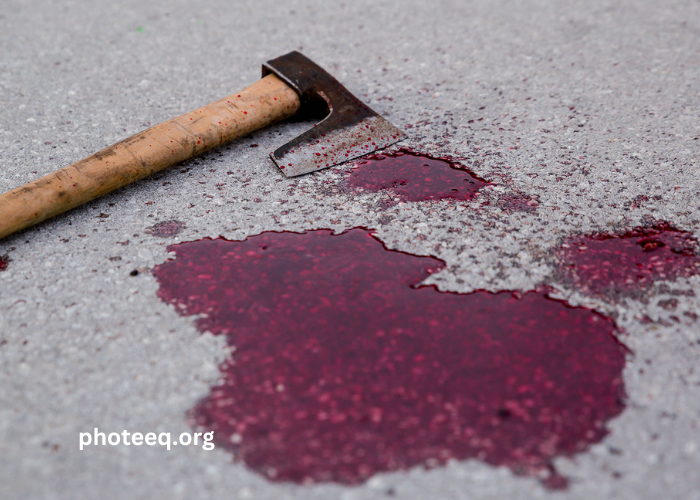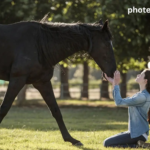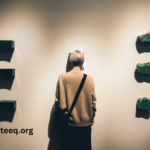In the realm of true crime, few cases have captured the public’s attention like the shocking murder of Betty Gore. The gruesome details of the crime and the subsequent investigation have been extensively covered by the media, but one aspect that continues to spark controversy is the existence and dissemination of Betty Gore’s crime scene photos. These haunting images have become a subject of fascination, raising important questions about the role of crime scene photos in investigations, the ethical considerations surrounding their release, and the impact they have on the public and the victims’ families.
The Significance of Crime Scene Photos in Investigations
Crime scene photos play a crucial role in criminal investigations. They provide a visual record of the scene, capturing vital details that may be missed or overlooked by investigators. These photos can help reconstruct the sequence of events, identify potential evidence, and establish the context in which the crime took place. In the case of Betty Gore, the crime scene photos were instrumental in piecing together the events leading up to her tragic death.
By meticulously documenting the crime scene, investigators can ensure that no detail is overlooked. These photos become an invaluable resource for forensic experts, allowing them to analyze blood spatter patterns, identify potential weapons, and gather other crucial evidence. Without crime scene photos, investigations would rely solely on witness statements, which can be fallible and subject to bias. Therefore, the significance of these photos in uncovering the truth cannot be overstated.
The Controversy Surrounding Betty Gore’s Crime Scene Photos
The release of Betty Gore’s crime scene photos has sparked a heated debate about the boundaries of transparency and sensitivity in true crime reporting. On one hand, some argue that making these photos public serves as a deterrent, reminding society of the horrors of violence and potential consequences. They believe that by exposing the brutal reality of crime, we can create a collective awareness that may prevent future tragedies.
However, others argue that sharing such graphic images is exploitative and disrespectful to the victims and their families. These photos can inflict further trauma on the loved ones left behind, who already endure unimaginable pain and grief. It is essential to consider the ethical implications of sharing crime scene photos and weigh them against the public’s right to information.
Legal and Ethical Considerations of Sharing Crime Scene Photos
The dissemination of crime scene photos raises complex legal and ethical questions. From a legal perspective, the release of these photos may infringe upon the privacy rights of the victims and their families. In many jurisdictions, there are laws in place to protect the privacy of crime scene images, limiting their accessibility to the public. Violating these laws can lead to legal consequences, such as fines or even imprisonment.
Ethically, the decision to share crime scene photos should be guided by compassion and respect for the victims and their families. The release of these images should be done with the utmost sensitivity, considering the potential impact on those affected. It is crucial to balance the public’s right to information with the need to protect the dignity and privacy of the victims.
The Impact of Crime Scene Photos on the Public and Victims’ Families
The release of crime scene photos can have a profound impact on both the public and the victims’ families. For the public, these photos can serve as a stark reminder of the realities of crime and the potential dangers that lurk in society. They can also satisfy a morbid curiosity, feeding into the public’s fascination with true crime.
However, for the victims’ families, the impact is far more personal and devastating. Crime scene photos can reopen wounds and traumatize those who are already struggling to cope with their loss. The constant reminder of the violence inflicted upon their loved ones can hinder the healing process and make it difficult to move forward.
The Role of Crime Scene Photos in Media Coverage
The media plays a crucial role in shaping public perception and understanding of crime. Crime scene photos, when used responsibly, can contribute to a more accurate and comprehensive portrayal of the events. They can provide visual evidence that supports the narrative and helps the public grasp the severity of the crime.
However, media outlets must exercise discretion and sensitivity when sharing crime scene photos. Gratuitous display of these images can sensationalize the crime, exploit the victims, and contribute to a culture of voyeurism. Responsible journalism requires careful consideration of the potential harm that sharing these images may cause and a commitment to prioritize the well-being of the victims’ families.
The Debate on Access to Crime Scene Photos in the Digital Age
In the digital age, access to crime scene photos has become more widespread and instantaneous. With the advent of social media and online platforms, these images can circulate rapidly, reaching an audience far beyond the traditional media outlets. This raises new challenges and considerations regarding the dissemination and control of crime scene photos.
The ease with which these images can be shared poses a significant risk of exploitation and further trauma for the victims’ families. It is essential to establish regulations and guidelines that govern the sharing of crime scene photos online, ensuring that they are not misused or weaponized for entertainment or shock value.
The Potential Consequences of Sharing or Accessing Crime Scene Photos
The consequences of sharing or accessing crime scene photos can be far-reaching and devastating. Beyond the immediate impact on the victims’ families, these images can perpetuate a culture of desensitization and voyeurism. They can desensitize the public to violence, blurring the line between entertainment and tragedy.
Furthermore, the release of crime scene photos can hinder ongoing investigations. By exposing crucial evidence, these images can compromise the integrity of the case and hinder the pursuit of justice. It is essential to recognize the potential consequences and exercise caution when deciding whether to share or access crime scene photos.
Conclusion
The case of Betty Gore and the controversy surrounding her crime scene photos highlight the delicate balance between transparency and sensitivity in the use of such images. While crime scene photos serve a vital role in investigations, their release should be approached with caution and empathy. The privacy and dignity of the victims and their families must be respected, and the potential consequences of sharing these images should be carefully considered.
As a society, we must strive to find a balance that allows for transparency and accountability while safeguarding the well-being of those affected. This requires thoughtful legislation, responsible journalism, and a collective commitment to empathy and respect. By navigating this delicate balance, we can ensure that crime scene photos are used in a manner that promotes understanding, justice, and healing.





